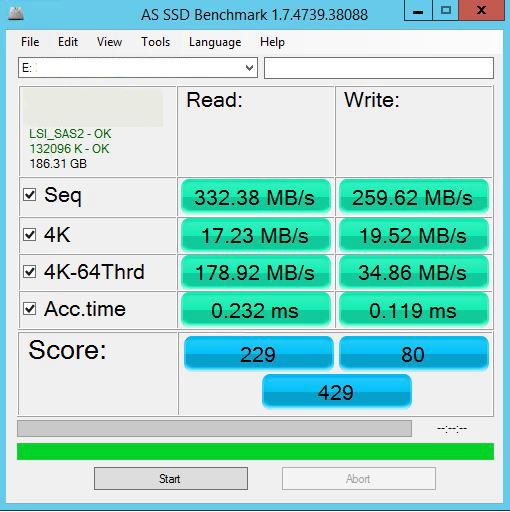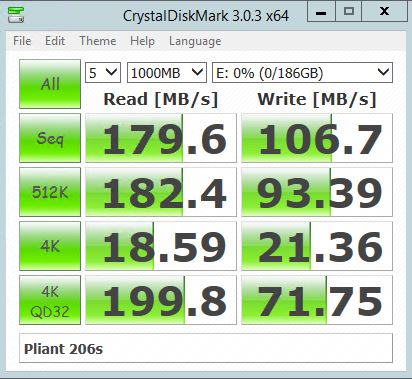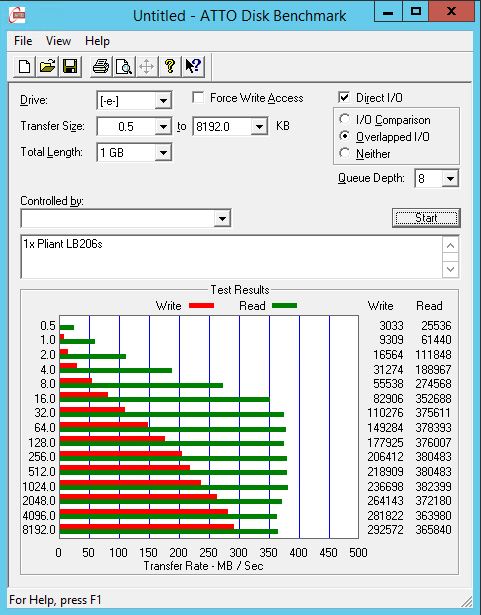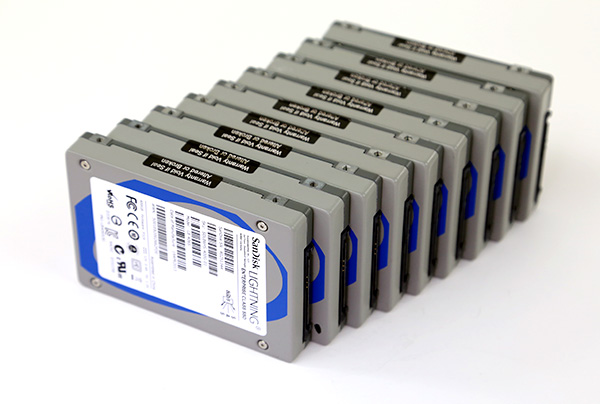Recently we have been investigating some of the higher-end SAS SSDs, including the Pliant/ SanDisk Lightning 206s (LB206s). These SSDs were originally Pliant branded drives before SanDisk purchased the company. They are absolutely tanks of SSDs with a SAS interface, and tons of 34nm NAND. The LB206s/ 206s (“s” denotes SLC) drives are 200GB drives with 256GB of onboard NAND. In terms of raw NAND this is as much as modern MLC (2 bits per cell) 512GB drives. SLC + 22% over-provisioning = drives built for write endurance. In fact, the rated write cycle on these drives is unlimited over a 5 year period. Aside from these 206s drives we have two 200GB Seagate Pulsar.2 MLC SAS drives and a few 400GB SanDisk 406s drives here for review. Optimus 400GB SAS drives are also inbound.
For a bit of history, these drives were extremely popular SAS SSDs. They were expensive, sold with 5 year warranties. In terms of SLC drives, the Intel X25-E was well known on consumer sites, but the Pliant/ SanDisk Lightning drives were used by many of the major OEMs such as HP, Dell, NetApp and others. One of the key reasons for these drives were so popular was that they offered a SAS interface. While technically SATA over SAS works, when vendors are putting together arrays with thousands of drives, having a topology of just SAS versus mixed SATA and SAS makes sense. These SAS drives are dual ported for high-availability applications and SAS does do more error checking/ correction than SATA counterparts.
Here is a bit of a spoiler for the series: the drives we purchased on ebay were all purchased within warranty and in the $0.55-0.60/ GB range. That makes them in-line with some of the lower-end SATA drives one may use. This is certainly not going to be the end-all authority series on the topic, but we get a lot of folks asking Enterprise SAS SSD v. Consumer SATA SSD so we figured why not add a data point making cost relatively comparable. There is very little data available on these drives.
One other major spoiler – we are only going to include drives that have at minimum power loss protection or do not have onboard DRAM write cache (so therefore may not need that protection). The Pliant/ SanDisk Lightning SLC drives do not have this write cache thus do not need the power loss protection. This is a trade-off as it does mean we will expect the drives to be slower. On the other hand it is good for data security.
Test Configuration
Since we are going to assume the use of already released hardware, we are using a legacy system for testing:
- Motherboard: Gigabyte GA-7PESH3
- Processors: Dual Intel Xeon E5-2690 (V2)
- SAS Controller: (onboard LSI SAS2008 in IR mode)
- RAM: 64GB DDR3L-1600MHz ECC RDIMMs
- OS SSD: Kingston V300 240GB
For those wondering, the LSI controller found onboard is the same as can be found in countless platforms and cards such as the IBM ServeRAID M1015 and LSI 9211-8i. We decided to use this controller since it is an extremely popular first-generation 6gbps SAS II controller. For those looking to build value SAS SSD enabled arrays, the LSI SAS2008 is likely going to be the go-to controller. A major point here is that we are using a SAS controller. This means that one cannot compare results directly to consumer-driven setups where a SATA SSD is connected to an Intel PCH port. There is a latency penalty for going over the PCIe bus to a controller to SAS. It also is a reason NVMe is going to be a game changer in the enterprise storage space.
One note on the SAS drives: SAS does operate at a higher voltage than SATA. That allows for better signal integrity and over longer cable lengths. In theory, the SAS drives are much better in remote disk shelves than their SATA counterparts. On the other hand, with lots of older-process NAND, a SAS interface and absolutely no intention of ever being used in a notebook, these drives use much more power than typical consumer SATA SSDs. 7w is not uncommon and they get HOT. I did take thermal images of the drives, but left those on the FLIR camera so I do not have them on this trip but I will do a follow-up piece with that information.
Pliant/ SanDisk 206s (lb206s) 200GB SAS Quick Benchmarks
It is important, especially with SSDs not to take a single test result at face value. One should look at a few different tests to get an idea of how the drives perform in different scenarios. To this end, AS SSD benchmark, CrystalDiskMark, ATTO all show different facets of performance. These are the simple/ quick benchmarks. In the near future we will do some comparisons with longer term write comparisons and latency testing that are closer to enterprise workloads. We are using a few of our standard tests to do a quick comparison to some of the other drives that have passed through the lab recently.
AS SSD Benchmark
AS SSD is a solid benchmark that does not write compressible data to drives. The result is perhaps one of the best workstation SSD benchmarks available today.

Here we see “acceptable” sequential speeds. Scaling on the 4K to the 64 thread version of the 4K test goes up by a factor of about 10x on reads and just under 2x for writes. There is clearly a performance penalty for writing directly to the NAND rather than doing write caching in DRAM.
CrystalDiskMark
CrystalDiskMark is another benchmark which gives non-compressible read/write numbers. This is in contrast to the ATTO Benchmark used by LSI/ Sandforce and its partners when they market a given solid state drive.

CrystalDiskMark shows a different picture. Sequential numbers are down quite a bit compared to other tests. We tried a few different drives and saw similar results.
ATTO Benchmark
The value of the ATTO benchmark is really to show the best-case scenario. ATTO is known to write highly compressible data to drives, which inflates speeds of controllers that compress data like LSI/ SandForce does prior to writing on a given solid state drive.

ATTO in this instance is writing to NAND so we see OK but not great numbers. One interesting bit is that while the read speeds hit a plateau at much smaller transfer sizes than writes. This actually makes a decent amount of sense. Appliances such as NetApp and typical RAID controllers do the write caching. In large RAID arrays, there are likely fewer 4KB writes than there are larger chunks which have been aggregated and written across multiple disks with the addition of stripe/ parity data.
Conclusion
On one hand, these are not the fastest drives out there. On the other hand, if you have physically handled the disks you will know, these are built like tanks. My sense is that these are made to be reliable, take high queue depth workloads, and be run in large arrays. The SanDisk/ Pliant Lightning SLC drives use 34nm NAND. Most rule of thumb estimates would put 34nm SLC at 100,000 P/E cycles and there is a fair amount of spare NAND onboard for wear leveling. That puts the endurance somewhere around 30-100 times higher than today’s MLC/ TLC drives. For write intensive workloads, there is a reason these drives are/ were extremely popular. Pliant/ SanDisk does have MLC drives that are less expensive and therefore markets the SLC Lightning drives specifically for write intensive workloads. Given the speed of the devices, and the number of P/E cycles of 34nm SLC, one can see how these drives get a 5 year unlimited write warranty.
Certainly more to come on these drives as we do more expansive testing.





Hotness. Great data points. I can’t wait to see more in the series.
You made me look at these drives. They seem like they may be slow but you can hammer with writes
I’m not in love with the choice of benchmarks but I get what you are doing. This is really an introduction to the drives and a quick baseline from what I read.
The LSI controller usage is +1.
You know, I still don’t get why SSD makers don’t use 34nm SLC ICs in their SSDs. Intel 311, Intel 313, and SuperSSpeed S301 all use those chips without charging an arm and a leg, so why can’t they (Samsung, Intel, Micron) put those 34nm/25nm SLC on modern controllers? Samsung’s XS1715 controller(32 channels), Intel’s P3700 controller(18channels), Marvell’s 88SS1093(8 channels) or Sandforce 3700 series(9 channels) with SLC dies would be amazing.